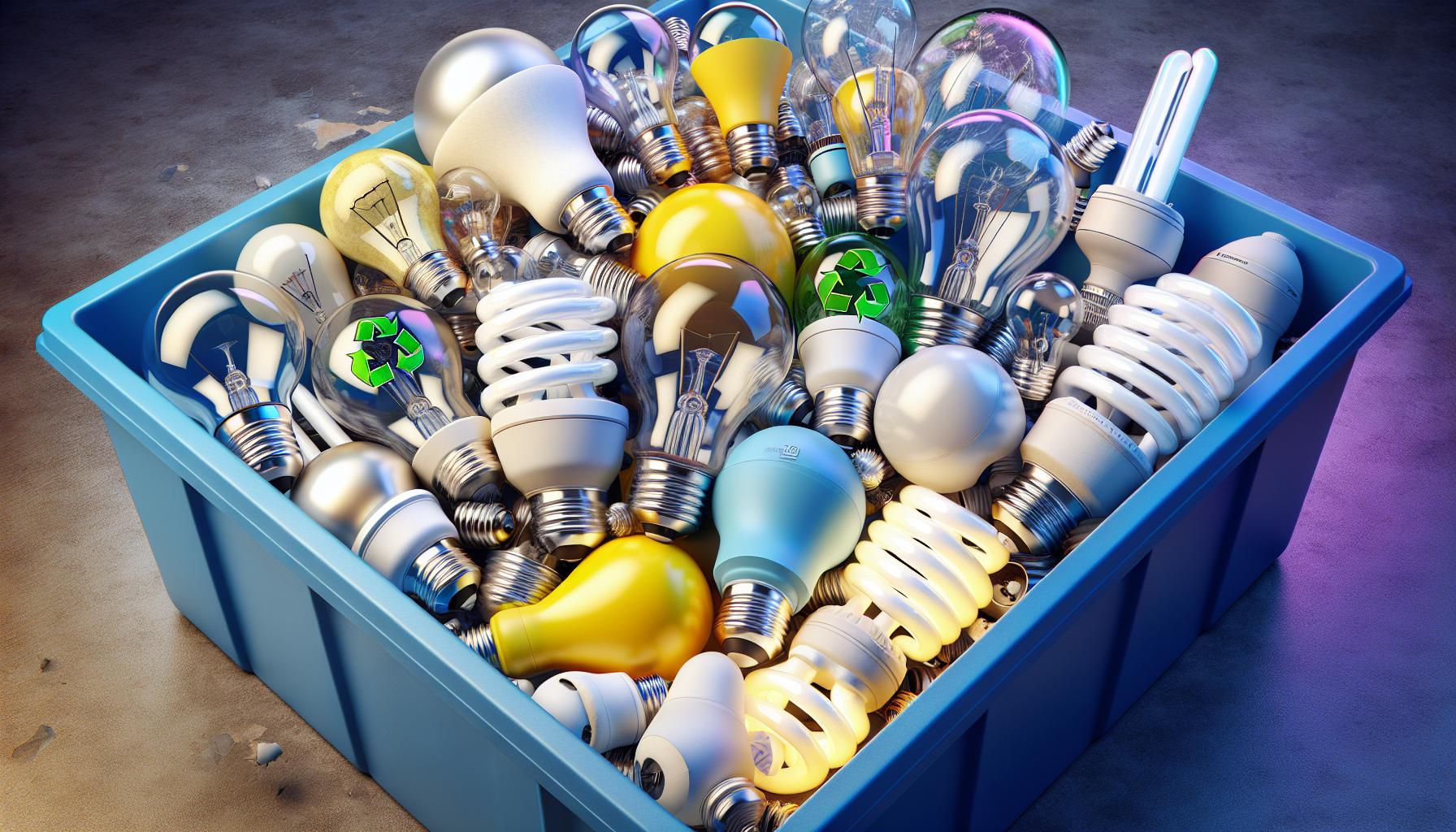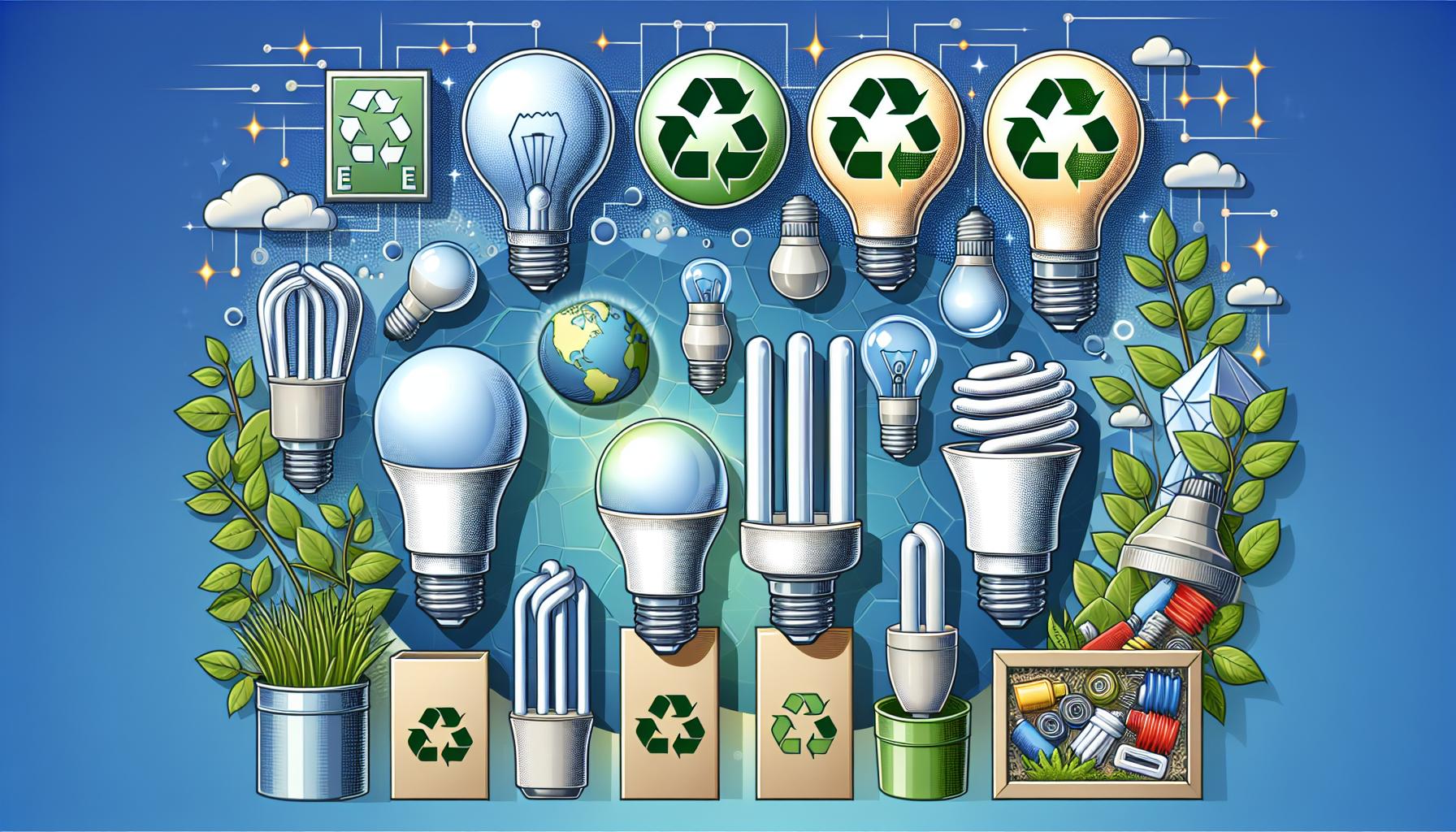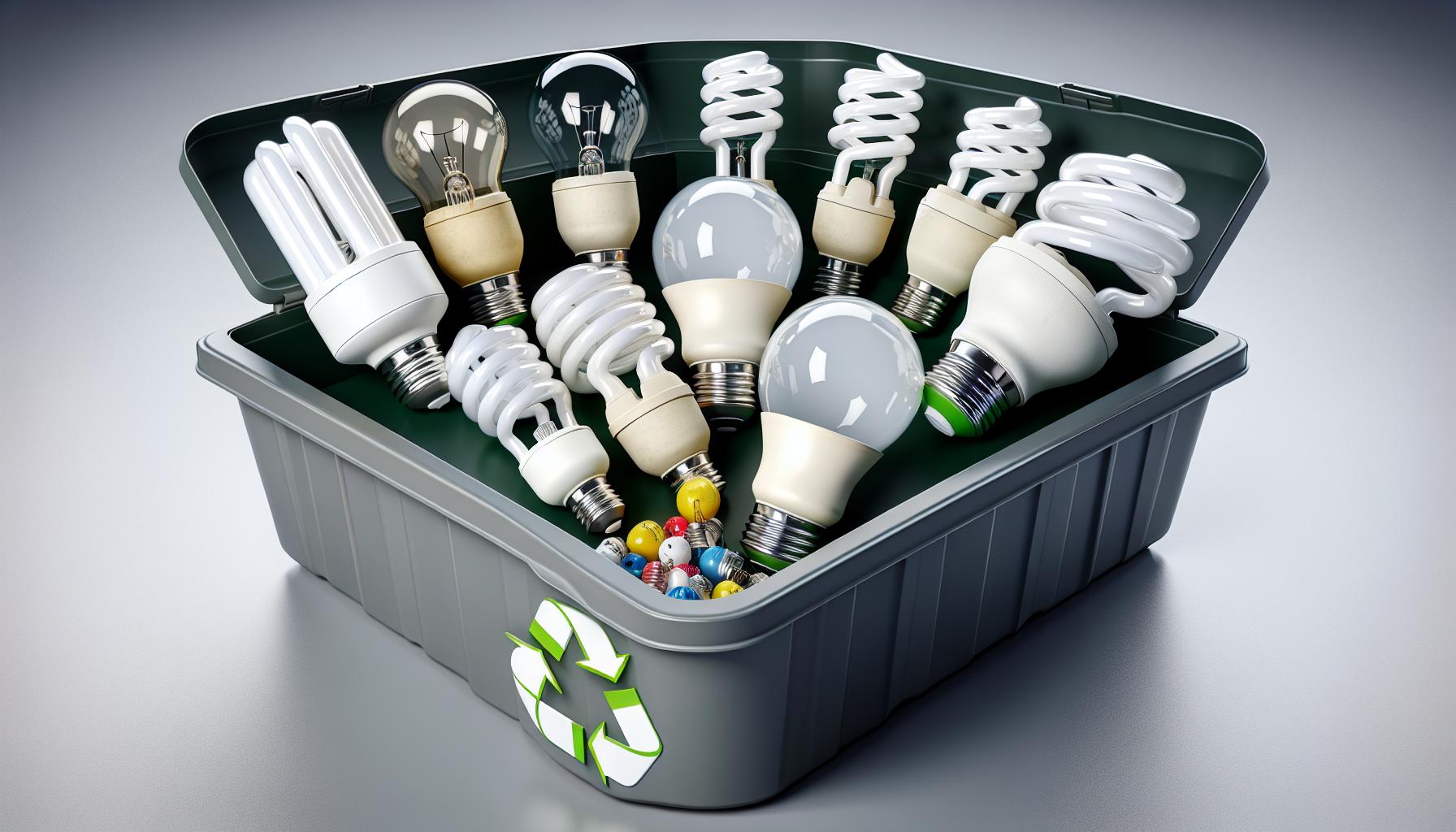Ever wondered what to do with your burnt-out light bulbs? You’re not alone. As you swap out old bulbs for new, energy-efficient ones, you might ponder if they’re considered electronic waste, or e-waste.
While they light up your life, disposing of them isn’t as straightforward as tossing them in the bin. Let’s shed some light on the topic and find out if those old bulbs are part of the growing e-waste concern.
Understanding the proper disposal of light bulbs is crucial, not just for tidying up your home, but also for protecting the environment. Stick around as we illuminate the path to responsible e-waste management.
What is e-waste?
When you dive into the world of home DIY projects and lighting, you quickly learn that not all waste is created equal. E-waste, short for electronic waste, is one of those categories that’s been growing rapidly, thanks to the proliferation of technology in our daily lives. It refers specifically to discarded electrical or electronic devices. Think of old cell phones, computers, and yes, certain types of light bulbs.
What makes e-waste particularly concerning is its makeup. These products are complex assemblies made up of various materials, some of which are harmful to the environment. This is where your keen interest in DIY and lighting comes in handy. By understanding the components that qualify as e-waste, you can make more informed decisions on how to handle their disposal and potentially give them a second life.
E-waste often contains:
- Precious metals (like gold and silver)
- Heavy metals (such as lead and mercury)
- Glass
- Plastics
Due to these components, throwing e-waste into the regular trash is not just unsustainable, it’s often illegal, depending on local regulations. For instance, the mercury you’d find in some light bulbs can contaminate water and soil, causing widespread environmental damage if not disposed of properly.
It’s also worth noting that e-waste isn’t just a concern because of its hazardous elements. It’s a literal gold mine of recoverable materials. There’s a silver lining to this cloud—if you’re upcycling or recycling, you’re contributing to the conservation of natural resources and reduction of greenhouse gas emissions. Take a moment to imagine the impact if every DIY enthusiast took the time to properly recycle their e-waste. It’s a small step with potential for a big change.
In the next segment, let’s delve into which kinds of light bulbs fall under the e-waste category and how you, as a DIYer and lighting aficionado, can lead by example when it comes to responsible disposal.
Types of e-waste
When you’re knee-deep in your latest home DIY project, it’s crucial to know which kinds of light bulbs you’re working with. Some light bulbs are indeed classified as e-waste. Specifically, fluorescent tubes, compact fluorescent lamps (CFLs), high-intensity discharge (HID) lamps, and light-emitting diode (LED) bulbs are considered hazardous when discarded improperly. Their intricate components can be a source of e-waste due to the presence of materials like mercury, lead, and other heavy metals that warrant special attention during disposal.
- Fluorescent tubes and CFLs contain a small amount of mercury, which is why you can’t toss them in the bin like your morning coffee cup.
- HID lamps, found in industrial settings and car headlights, are also on this list.
- Even LEDs, despite their energy efficiency and longer lifespan, eventually reach the end of the road and need to be disposed of responsibly.
But worry not! DIY enthusiasts like yourself can play a pivotal role in curbing the environmental impact of these products. Rolling up your sleeves and engaging in proper e-waste disposal practices not only resonates with your love for transformative home projects but also mirrors your commitment to sustainability.
As you sift through the bewildering array of bulbs—sometimes literally littering your garage—you’ll find that many offer recycling options. Major retailers and waste disposal services frequently provide drop-off points for used bulbs, ensuring that their materials are recovered and repurposed. By tapping into these resources, you not only contribute to the well-being of our planet but also encourage others to join in on responsible disposal efforts.
Remember that each bulb type has its peculiarities, so check the recycling guidelines specific to the light source you’re dealing with. This way, not only do you avoid the legal faux pas associated with improper e-waste disposal, but you also set a shining example for others to follow in your eco-conscious footsteps.
Are light bulbs considered e-waste?
« What to Do When Light Bulb Exploded: A Quick Safety Guide
Can You Use LED Light Bulbs with a Dimmer Switch? Expert Tips Revealed »
You may be wondering if those spent light bulbs from your latest home DIY project fall under the category of e-waste. The answer is yes, many types of light bulbs are indeed considered as e-waste due to the hazardous materials they can contain. Whether you’re dealing with incandescent, halogen, or more modern LED bulbs, they all have their own environmental impact when discarded improperly.
For instance, fluorescent bulbs, including CFLs and certain types of LED bulbs, possess small amounts of mercury. Mercury is toxic, and even in very small quantities, it can cause significant environmental harm. These items need to be dealt with cautiously, following specific disposal recommendations to prevent contaminating landfills and eventually, groundwater sources.
LED bulbs, though often lauded for their energy efficiency and longer lifespan, are not exempt from being e-waste. LEDs contain circuit boards and metals that require proper disposal methods to avoid adding to the growing problem of electronic waste. As bright, innovative, and enticing as these bulbs are, they come with the responsibility to dispose of them responsibly once they’ve dimmed for the last time.
Local recycling programs often provide resources and facilities for the disposal of these types of e-waste. It’s up to you, the environmentally conscious DIY enthusiast, to take advantage of these programs. Retailers may also offer take-back schemes, which not only makes it easier for you to recycle but also helps ensure that the valuable and potentially harmful materials in bulbs are reclaimed or disposed of properly.
What’s vital to know is that by participating in proper disposal and recycling programs, you’re not just tossing out an old bulb—you’re contributing to a larger cycle of sustainability. Your efforts help minimize the release of harmful substances and ensure that useful materials are recovered. This way, when you’re illuminating your home with the latest lighting solutions, you’re also shining a light on the importance of e-waste management.
The environmental impact of light bulbs
As a DIY enthusiast and lighting expert, you’re well aware that every light bulb has a story beyond its glow. The environmental impact of light bulbs starts from the manufacturing process and extends to the moment they’re disposed of. Producing light bulbs consumes resources like glass, metal, and, in some cases, hazardous substances such as mercury.
When you’re knee-deep in a home project, you might not think twice about the energy consumption of your lighting choices. Yet, your selection could significantly impact your carbon footprint. Incandescent bulbs, for instance, convert less than 5% of the energy they use into visible light, which isn’t just inefficient—it’s environmentally taxing. In contrast, LED bulbs convert much more energy into light and last longer, but they’re not without their drawbacks.
LEDs are a more energy-efficient choice, but they come with their own set of environmental concerns—mainly, the electronic components they contain. Though they lack mercury, LEDs still have circuit boards and other electronic parts that qualify them as e-waste. When these components end up in landfills, they have the potential to leach toxic materials into the soil and water supply.
Here’s where your role as a responsible DIYer comes into play. With a little effort, you can ensure the light bulbs you replace don’t become a part of the problem. Start by opting for more sustainable lighting options—such as choosing LEDs over incandescent bulbs— and be meticulous about following proper disposal recommendations. By doing so, you’ll be doing your part in reducing toxic e-waste and promoting a cleaner environment.
Remember, every bulb that’s thoughtlessly thrown into the bin can release harmful elements that may damage our ecosystem. While it’s exciting to brighten up your space, it’s equally important to consider how you can dim the environmental impact. Always seek out and support local recycling programs for your used bulbs, as these facilities are equipped to handle them appropriately, ensuring that the materials inside your spent light bulbs don’t end up polluting the planet.
Proper disposal methods for light bulbs
While you’re a DIY enthusiast at heart, knowing how to properly dispose of light bulbs after they’ve provided their last flicker of light is crucial. Not only does it reflect your respect for the environment, but it also safeguards your community from the potential hazards associated with improper disposal.
Incandescent bulbs, although they may not contain harmful substances, still present an issue. Since they’re not recyclable due to their delicate filaments and glass, they should be wrapped and disposed of in your household trash. However, if you’ve got a knack for crafts, consider repurposing these bulbs into decorative items or small plant holders – an eco-friendly and creative twist to your DIY projects!
For compact fluorescent lamps (CFLs) and fluorescent tubes, which contain a small amount of mercury, special care is needed. Here’s a quick guide:
- Check with Local Authorities: Find your local hazardous waste disposal facility by checking with your municipality. These facilities are equipped to handle bulbs containing mercury safely.
- Retailer Take-Back Programs: Some home improvement stores and retailers offer CFL recycling programs. They’ll take your used bulbs and ensure they’re managed properly.
- Proper Packaging: Before you take the bulbs for recycling, place them in a sealed plastic bag to prevent mercury from escaping if a bulb breaks.
As for LED bulbs, they may not have mercury, but they still qualify as e-waste due to their electronic components. Handle them like this:
- E-Waste Recycling Centers: Drop them off at designated e-waste collection points or recycling centers.
- Mail-In Programs: Some manufacturers offer mail-back services, so look into these as a convenient recycling option.
Conclusion
You’ve got the power to make a positive impact on our planet with every light bulb you use—and when it’s time to say goodbye. Remember that while tossing incandescent bulbs in the trash is okay, repurposing them can give them a new life. Don’t forget to take your CFLs and fluorescent tubes to a local facility where they’ll be safely out of harm’s way. And for those LEDs, seek out a recycling center or take advantage of a mail-back service. Your choices matter, so let’s light the way to a brighter, greener future together!
Frequently Asked Questions
How should incandescent bulbs be disposed of?
Incandescent bulbs should be carefully wrapped and discarded in your household trash as they are not recyclable. Alternatively, they can be creatively repurposed for decorations or as tiny plant holders.
Can compact fluorescent lamps (CFLs) be thrown in the trash?
No, CFLs should not be thrown in the trash as they contain a small amount of mercury. They should be taken to local hazardous waste disposal facilities or retailer take-back programs.
Are LED bulbs recyclable?
LED bulbs should not be disposed of in household trash due to their electronic components. They should be dropped off at e-waste collection points, recycling centers, or some manufacturers provide mail-back programs for recycling.
Do fluorescent tubes require special disposal?
Yes, fluorescent tubes contain mercury and require special care during disposal, similar to CFLs. They should be taken to a local hazardous waste facility or participate in a retailer take-back program.
Is there a way to repurpose old light bulbs?
Old light bulbs, particularly incandescent ones, can be repurposed into decorative items or small plant holders, giving them a new life beyond illumination.





